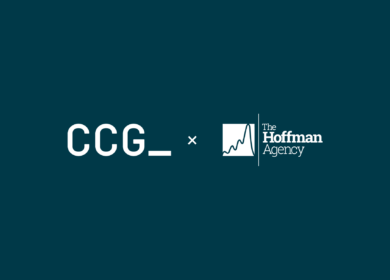RIP to the old hub and spoke model. It’s time to adopt a hive mentality and recognize that good ideas and sound insights come from multiple sources.
I think that we can all agree that effective communication is usually a dialogue, not a monologue. It encourages interaction, welcomes feedback and even invites debate. Yet in our own lives as communications professionals, this logic often goes out of the window.
For example, at many multinationals (and by proxy, at many agency networks serving them), the standard approach is that headquarters dictates strategy. It dictates KPIs, it dictates budget — and the rest of the world is expected to follow with few questions asked.
That’s the opposite of a conversation. That’s a dictatorship.
Democracy versus dictatorship
Now to be fair, there’s a reason this traditional model has lasted for so long. It’s efficient and practical. You can make quick, speedy decisions and leverage existing assets. It’s consistent. It’s easy to track.

And for a long time, it was also effective. Global MNCs could make a real bang with comparatively little localization required.
Well… with exceptions.
Japan has long been a difficult country for US multinationals to crack. Its value systems are deeply entrenched within its society, and many of those values are completely counterintuitive to Western audiences. This can make Japan appear contrarian and unnecessarily cumbersome, but the reality is that if companies don’t come to respect its unique culture and customs, they won’t make a dent.
It works the other way too. Asia-Pacific-based multinationals have frequently struggled to understand US or European market realities. What might seem an overly aggressive interview or negative headline to a Chinese company can actually be par for the course and relatively positive by German standards, for example.
Now imagine that every market in the world is starting to follow this model.
As developing economies start to mature, markets are becoming more fragmented and individualistic. They demand to be recognized for their size, their population, their digital maturity and technological prowess, their unique cultures, customs and beliefs.
This can’t happen when one market dominates the conversation. When we allow proximity bias to reign. It can only happen when each voice (read: local insights) is valued and given the space to flourish.
In this scenario the power dynamics shift and the old hub model begins to falter.
This is why we believe a modern-day hub should resemble a democracy. A hive. A central connecting point that invites everyone to the table to talk, with the goal of developing the best approaches for different markets and regions. Valuable information flows both in and out. It means local voices are heard and given direction combined with autonomy.
In this way, success becomes a collective achievement. It requires open-mindedness and almost certainly more effort. But the results make it worthwhile.
The power of the collective
Let’s take a look at some of these results.
We are a US-headquartered agency. But we would not have come very far if we believed that the US was the sole center of gravity for ideation and creation.
Since setting up shop in Asia in the mid-nineties, we’ve seen it as vital for the region to have a big say in how we operate as a company, and to give it space to move to the beat of its own drum.
But Asia is also home to many of our global services — it’s our homebase for design and techplomacy solutions for starters. We have dedicated global resources based in Asia too, including myself (Chief Global Officer) and our Director of International Communications. This is a real rarity in the agency world, as one prospective client recently noted, and an absolute game changer.
We also make an effort to actively bring East and West closer together through initiatives such as Building Bridges, where we invest in sending our people to different markets so that they get to spend some time physically working together. This helps ensure we’re able to build trust and openness teams that are otherwise on different sides of the planet and encourages all parties to share and to listen.
Of course, having a single P&L helps us immensely. It frees us from competing at an individual market level and promotes genuine collaboration and support between teams in the best interests of the client.
Ultimately, the numbers speak for themselves: More than half of the APAC revenue comes from work spanning two or more regional markets.
Bridging the cultural divides
Let’s be clear: proactive cultural bridging is quite different to reactive troubleshooting when standards take a dive. It’s a commitment to building and maintaining a truly multimarket, multi-region mindset that values local diversity and insights.
This is the secret sauce to a successful hub in today’s comms landscape.
But it’s no small feat.
Because depending on where you are in the world, what’s deemed to be ‘good communications’ will be very different.
Does your society like to state the obvious to make sure everyone’s on the same page? Or leave something to the imagination for people to read in between the lines?
Does your culture call out or own up to mistakes? Or would criticism become a black mark on someone’s reputation?
Understanding that cultural norms differ is one thing. Embracing how those differences lead to greater inclusivity, innovation and creativity is another. Because unless you are highly aware of your own tendencies, it’s easy to fall into the trap of fighting for cultural dominance.
As an independent, tech-focused IMC agency, we are doing our bit to challenge this dynamic. There is almost never a single ‘right way’ to do things. There are usually several, and it’s important to be attuned to those possibilities. Above all, we believe that regardless of where an idea or program originates, it must speak clearly to individual markets. For many engaged in multimarket communications, this means shifting the mindset from one of centralized outputs to collaborative outcomes.
To learn more about how we help tech and B2B brands achieve their multimarket ambitions, get in touch at [email protected].

